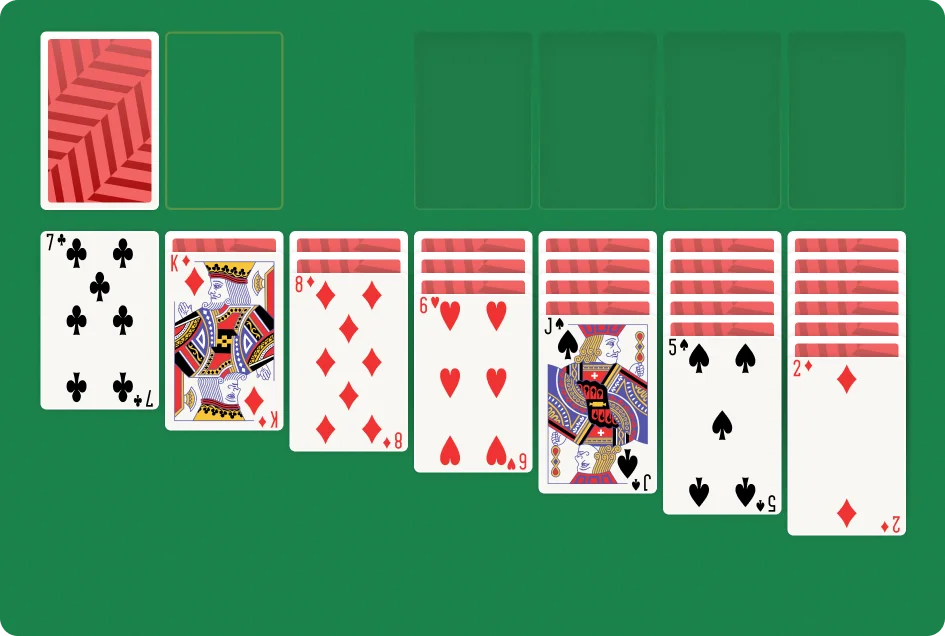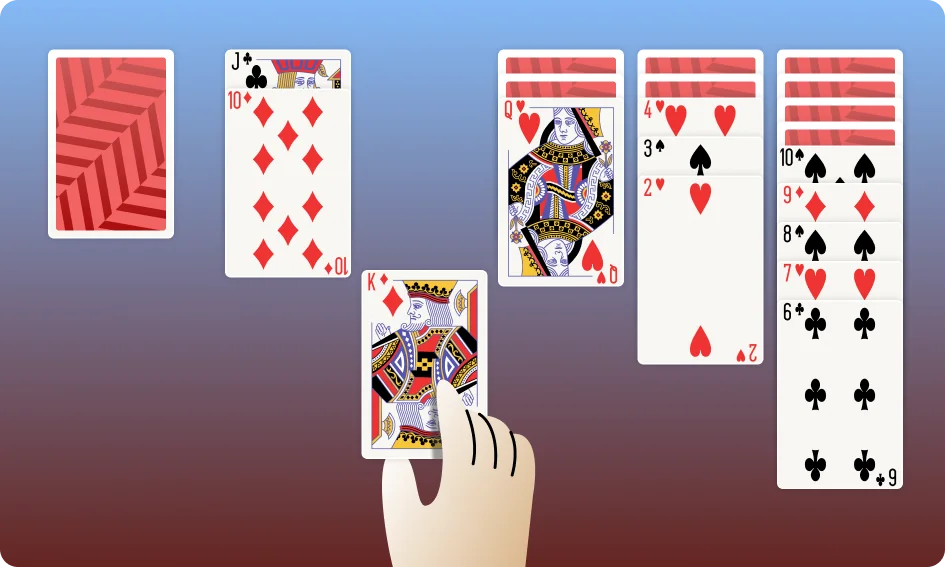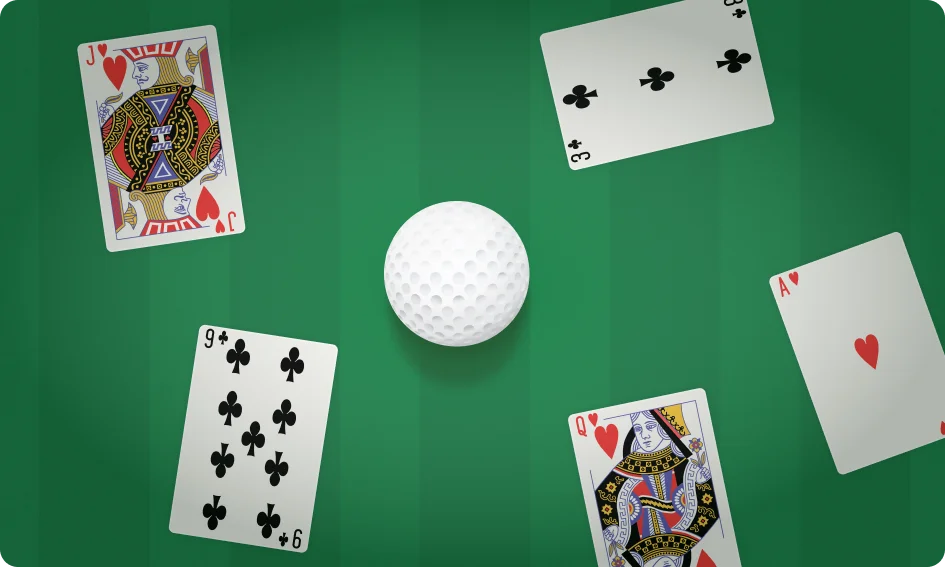Solitaire is one of the most popular single-player card games in the world. Even if you haven’t played it, you’ve surely heard of it or seen it installed on your Windows Operating System. New players can be intimidated by the game’s seemingly complex setup and countless variations.
You might find yourself in a similar spot. If you are discouraged from trying out the game that people keep talking about, then don’t worry. I’m here to help. Contrary to initial appearances, it’s straightforward to set up and play Solitaire.
The most commonly played variant – the one people typically refer to when they say “Solitaire” – is Klondike. Without further ado, let’s break down how you can set up and start playing Klondike (or traditional or classic Solitaire).
Introduction to Solitaire
Klondike originated from the Klondike region in Yukon, Canada. This is where the infamous Klondike gold rush took place in the 1890s. Historians standardly associate this event with Solitaire’s genesis. A game that started out as a pastime between merchants soon spread far and wide. Indeed, it became popular among princes and paupers alike.
People around the world later came to know Klondike (and Solitaire by extension) when Microsoft developed a software adaptation of the game. They then installed it by default in their Windows Operating System. This triggered more and more digital forms of the game. In fact, people now mostly play Solitaire digitally rather than physically.
How To Setup and Play Solitaire

If what I’ve said has motivated you to finally give this beloved game a shot, then keep reading. I will show you how to set up and play Klondike Solitaire.
Objective
The objective is to build four foundation piles. A foundation pile is a pile of 13 cards of a specific suit sorted in ascending order, from Ace to King. The Ace is at the bottom of the pile while the King is at the top. Since there are four suits in a standard 52-card deck, you must build four foundation piles. If you run out of moves to make before meeting this objective, then you’ve lost the game.
Setup and Dealing
If you’re playing digital Solitaire (whether on your phone or computer), then the setup will be done for you. However, if you want to keep things more authentic and play with physical cards, then you can follow these steps:
- Take a deck of 52 cards (so no Jokers) and shuffle it well. The better the shuffle, the more randomized the cards will be and the better the experience.
- Deal out seven piles of cards from left to right. The first pile must contain one card, the second pile two cards, the third pile three cards, the fourth pile four cards, the fifth pile five cards, the sixth pile six cards, and (you guessed it) the seventh pile seven cards. These seven piles make up “the tableau”.
- Flip over each pile’s topmost card.
- Take the remaining cards and set them aside. These cards will form “the stock”. You can draw cards from the stock to open up more moves. I’ll explain this in more detail later.
- Now, set aside four spaces for the four “foundation piles”, and you’re all set to go!
So, you can see that the setup isn’t difficult at all. The seemingly complex tableau is just a series of piles, where each pile is dealt one more card than the previous one.
Gameplay Rules and Tips
Now that you know how to set up a game of Solitaire, let’s look at how you actually go about playing. Keep reading to learn all about Solitaire’s rules and what you can and cannot do.
- Whenever a face-down card becomes the topmost card in a pile, you can flip it over. It is now a face-up card, and all the rules for face-up cards apply to it.
- You can move the topmost face-up card in any pile onto the topmost face-up card in another pile as long as the latter is one rank higher and the opposite color. By opposite color, I mean red (Diamonds and Hearts) versus black (Spades and Clubs). So, you can move a Three of Diamonds onto a Four of Spades, for example, but not onto a Four of Hearts because it is not the opposite color. You can, likewise, move a Jack of Clubs onto a Queen of Hearts but not a Ten of Hearts because the latter is not one rank higher.
- If you need a refresher, here is the order of ranking for each card from lowest to highest rank: Ace, Deuce (Two), Three, Four, Five, Six, Seven, Eight, Nine, Ten, Jack, Queen, King.
- An important extension of the above rule is that you can move a group of face-up cards onto the topmost face-up card of another pile as long as the bottom-most card of the group is one rank lower and the opposite color.
- As you progress through the game, you’ll end up vacating a pile or two. You can only move a King or a group of cards starting with a King into an empty pile.
- As soon as you reveal an Ace, you must move it to its respective foundation pile. As mentioned, foundation piles start with an Ace, so unless an Ace is present, you can’t even start moving cards to any given foundation pile. This is why you must move Aces immediately, even though you can take your time with other cards.
- Apart from Aces, all other cards can be freely moved to the foundation pile and back into the tableau (as long as you respect the aforementioned conditions).
- I promised to explain how you can use the stock. You can use the stock at any point in the game, regardless of whether or not there are possible moves on the tableau.
- To use the stock, simply draw the topmost card and place it face-up on a space known as the “waste pile”. You can keep drawing cards to build this pile. But, when the stock runs out, you must reuse the current waste pile as the stock.
- At any point, you can move the topmost card from the waste pile to the tableau or a foundation pile, but not vice versa.
| Tips | Explanation |
| Flip the first card in the stock right away. | Flipping up the first card in the stock at the start gives you one extra move to play, which could be a game-changer. |
| Cycle through the stock to collect Aces. | You can’t start building a foundation pile of any given suit unless you have already placed that suit’s Ace card. This Ace might be in the stock, so you should run through it to start building your foundation piles and working toward the final objective. |
| Stack your foundations evenly. | To play Solitaire more effectively, try to keep your Foundation piles balanced. This means having two piles of different colors at the same level and the other two piles at a higher level. This way, you can sometimes move cards in pairs, making the game progress faster. |
| Don’t over-rely on the stock. | While two of these five strategies involve the stock, it’s important to note that you shouldn’t rely too much on it. As a rule of thumb, inspect the tableau for any possible moves and only use the stock when you’ve exhausted this option. |
| Don’t be scared to use the undo option. | Given the amount of concentration that Solitaire demands, it’s perfectly normal to slip up here and there. Most digital Klondike adaptations have an undo feature. If playing physically, you can also allow yourself a limited number of undo’s. |
Conclusion
Solitaire is a great game with many benefits, both mental and emotional. I believe that everyone should play it at least once in their lifetime. If you haven’t tried Solitaire, but have been thinking about doing so, then I hope that you found this guide helpful. Once you’ve learned Klondike’s setup and rules, you can start exploring the treasure trove of other Solitaire variants out there.





